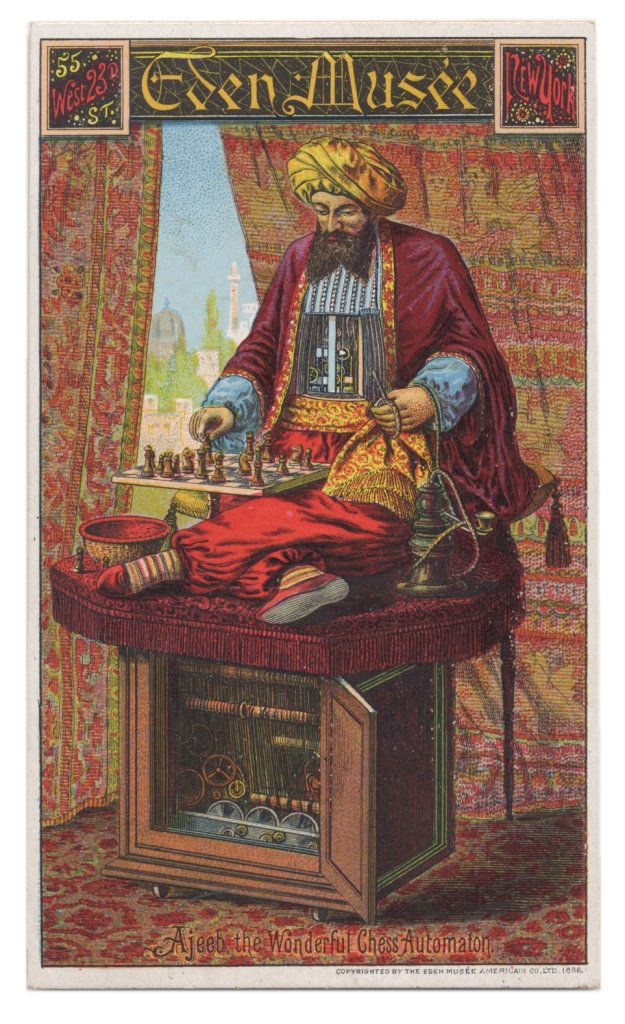
Patanjali: Is it even possible to build a machine like this that can play chess purely by mechanical means? (i.e., no electronic or digital stuff).Īlexmagnus: Patanjali, why not? After all, there are mechanical calculators (there is a nice video on YouTube btw showing what happens to a mechanical calculator when you perform division by zero).Īlso, around the Turk's time there was an actual mechanical automaton which could do only one thing - checkmate with K+R vs K. Philidor, who had to flee to England, however, was considered unofficial world champion of actual over-the-board play for another decade after he had played the "computer" even though the cassette of a-far-off-time was yet to come and go.

Ljfyffe: Time-warped to-whomever comments are noted. Offramp: He would need only a few new cassettes of opening theory and in a few days he would be World Computer Champion again. Ljfyffe: Yes, in 1783 in Paris, Philidor defeated the "Automation". I know its not in the database here, but does anyone know if thats true? James Demery: I read that the Turk played a game against Philidor. Some information about "The Chess Machine" Novels are not precisely my stuff, but I really enjoyed this one. I'm not finished, but it's a fun and well-written story so far! Worth a look if that's your sort of thing.Ĭheck It Out: The Turk's innards were stuffed, so to speak. It's a fictionalized account of von Kempelen and the operation of the machine.

YoungEd: Just a few days ago, I started reading a novel called "The Chess Machine" by Robert Lohr (translated from German). Richard Taylor: As I said elsewhere I recall (long ago in the 60s) reading about the Turk and I think it was said that Pilsbury played "inside the machine" some times, using his great abilities at blindfold chess: I also (think I read) that he used to consume large amounts of whiskey to get through what was an extreme ordeal cramped inside the Turk's inner parts.īut perhaps that is one of those misleading stories one picks up. Source: 'British Chess Magazine' Almanac, p. Karpova: Baron von Kempelen died on Maat the age of 70. TheFocus: Usually missing the cigarette lighter. Offramp: One good thing about lending someone your time machine is that you get it back immediately. Definitely a good time to break the fourth wall. Offramp: I would have hated to be inside it when that fire broke out. These games allow this person to be both unknown and remembered. MJCB: I already find it hard to concentrate and play in front of a board, what about inside a box! This man (or woman?) was having such an uncommon life, and I would not bet it was a pleasant one. Shams: History records that the Turk, faced with a lost position, would first attempt the old "earthquake" ruse of upsetting the board and pieces in a manner meant to look accidental. REFINE SEARCH: White wins (1-0) | Black wins (0-1) | Draws (1/2-1/2) | The Turk wins | The Turk losesĭanielBryant: Does anybody know how The Turk indicated resignation when "it" lost? The two other famous chess automatons built subsequently were Ajeeb (Automaton) and Mephisto (Automaton). The Turk ended its days in the Chinese Museum in Philadelphia where it was destroyed by a fire in 1854. For a period it was in the private collection of Prince Eugene de Beauharnais but Maelzel acquired it again in 1817.įurther exhibitions followed but in 1837 both Maelzel and the Turks operator, Schlumberger (who was the tutor of Pierre Charles Fournier de Saint Amant) died from Yellow fever while returning to the USA from Havana. In 1809 during the Wagram campaign Napoleon Bonaparte played against it in Vienna. It was exhibited thereafter although somewhat intermittently for the next 84 years.Īfter von Kempelen's death in 1804, the Turk was purchased by Bavarian showman Johann Nepomuk Maelzel. Its first performance was for the Habsburg Court in Vienna in 1770. The secret of this hoax was that a normal sized man could recline within the machine, and remain unseen by the audience by repositioning himself during the initial display of the device's interior.

During a performance, the showman would open two cabinets to display a large empty space, and then a third cabinet to display an area of tightly packed machinery, presumably the "brains" of the contraption. It was billed as a "chess playing automaton" capable of beating even the strongest challengers. The Turk was designed by Hungarian engineer and inventor Baron Wolfgang von Kempelen in 1769. (born 1769, died 1854, 85 years old) Hungary


 0 kommentar(er)
0 kommentar(er)
